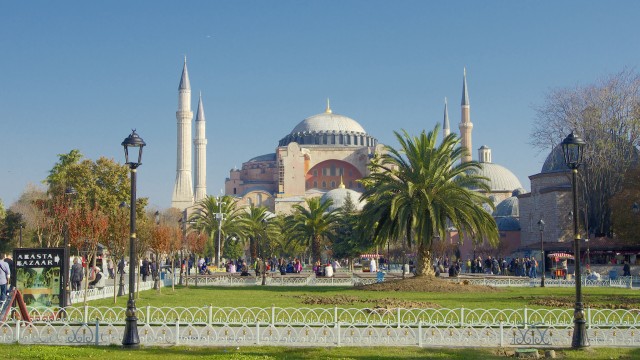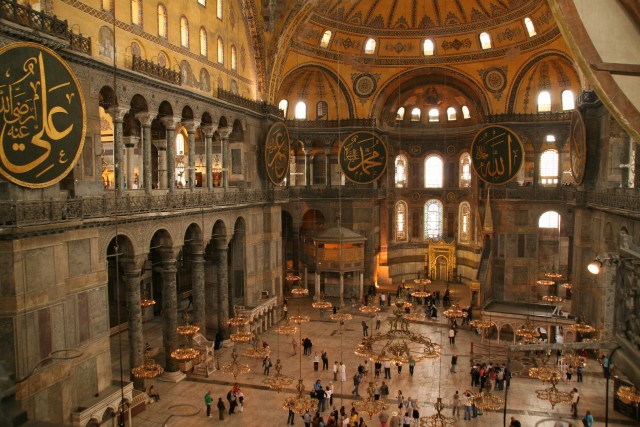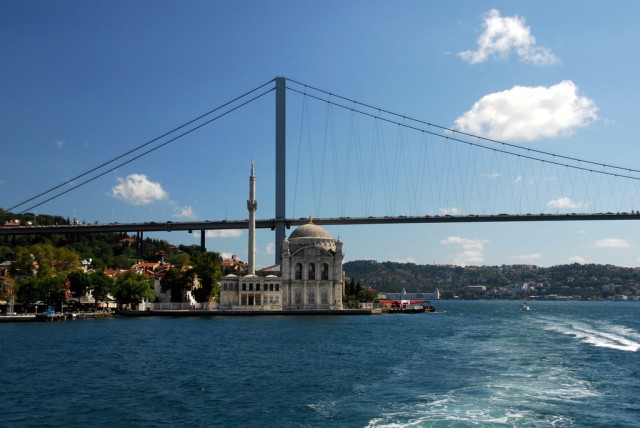 the Travel Enthusiast
the Travel Enthusiast
- 10 Apr
Adam in Amazing Places | NO COMMENTSIstanbul, The Striking Light of Bosphorus
In Istanbul both European and Oriental traditions can be sensed.
If we could choose a city filled with contrasts, we would choose Istanbul, the city that divides Europe and Asia by the Bosphorus strait, yet at the same time, unifying them in a paradoxical. Occidental life is generally accepted on the Asian part, and the Oriental traditions remain strong on the Golden Horn, which is European Land.
Women from western districts of the city like Eyup and Fatih cover their faces and men wear turban headbands and pray at mosques and minarets. On the opposite site of the Goldern Horn you find business costumes people with elegant grey costume and student girls with discreet makeup walking through shops and office buildings.
Young people from the parks of the city-satellite Uskudar, situated at the other side of the Bosphorus, are dancing and singing rap and skateboarding. However on the narrow and trafficked streets of Old Istanbul the scene is diferrent since it mixes the smell of gasses with the oriental aroma with the air of the sea.
Exactly these are the differences which are obvious and hard to reach between cultures and traditions. It creates a specific atmosphere of this city with a population of 8 million, which changed continuously the aspect of the city for two millenia.
Only a single time in history the settlement faced destruction and it was in 196 AD when Emperor Septimius Sever took revenge on the people of the Byzantine Empire for a civil war.
The Second Rome
Legend says that Byzas, the leader of the Megaran Greek colonists, conquered the peninsula from the Trachians and established the city in 657 B.C. The history of Byzantium took a turn when emperor Constantine the Great chose the city as “the second Rome” as his capital, changing its name into Constantinople (the city of Constantine) in October 11, 330 A.D. After 65 years, the city has become the capital of the Eastern Roman Empire also known as the Byzantine Empire.
The city prospered under the leadership of Justinian I, in the 6th century. It was that time when many churches (among them being, the well known Hagia Sophia),gorgeous buildings and streets were constructed.
- Flights
- Hotels
- Packages
- Cars
- Cruises
travel search by Travelgrove (get this widget)Constantinople entered under the leadership of the Turks in 1453, when the Ottoman Army of the Sultan Mehmed the Conqueror occupied the city, proclaimed it as the capital of his new empire, and Turks built mosques and other Islamic style buildings that still stand today. At this time, Hagia Sophia gained 4 minarets, becoming a mosque.
The Reminding of the Sultans Power
After 450 years under Ottoman rule, in the year of 1923, after the last sultan was dethroned, the Republic of Turkey was established, which separated state from religion. As proof of this change, thecapital was moved to Ankara and the palace of the sultans was transformed into a museum.
Not even Hagia Sofia has any religious role anymore and it only serves as a museum, although many Muslims go there to worship. The Church itself, the most impressive example of byzantine architecture, was the biggest in the whole Christianity for centuries. Emperor Justinian I began the construction in 532 AD, it took him less than 5 years.
At the south of Hagia Sophia lies the Palace of the Sultans (Topkapi Sarai) where Sultans and all over 4.000 servants lived this outstanding complex seems to have an endless number of rooms. The harem had 400 rooms with stunning and organized interior gardens and yards. Today the palace guards many treasures and sacred relics for the Muslims.
The Hagia Sophia faces the most bizarre attraction of Istanbul, The Basilica Cistern which was built in the 6th century. It is a subterranean water reservoir. The roof itself is arched by 336 columns, each one of them being 8 meter tall, having Medusa faced sculptures, and the cistern could store 80.000 cubic meters of water.



